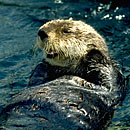
Frequently Asked Questions and Facts Index "S"
|
ALPHABETICAL INDEX: [A] [B]
[C] [D] [E] [F/G/H]
[I/J/K] [L/M]
[N/O/P/Q] [R]
[T/U/V/W/X/Y/Z]
|
|
| Keyword – S |
Question/Answer/Fact |
| Scientific Authority |
What is the role of the Division of Scientific Authority? The mission of the Division of Scientific Authority (DSA) is the science-based conservation and enhancement of species in the wild on a global basis, with a focus on plants and animals subject to international trade. DSA reviews applications for CITES, ESA, and WBCA permits and issues findings related to the biological effects of activities to be conducted under permits. DSA also determines whether recipients of live specimens of CITES Appendix-I species are suitably equipped to house and care for them. |
| Scientific Name |
I am not familiar with the scientific name as shown in the CITES Appendices (lists). How can I find a species by its common name? Click here to access a CITES species database that allows you to search by common name. Please be aware that searching by common name may result in an incomplete or inaccurate result. For example, some problems that occur when a search is done by common name are: (a) some species have more than one common name; thus, you may not know if the scientific name you get from your query is the correct scientific name for the species you have; (b) some species have no common names or not all common names are in the database; and your query may not give you a result even when your species is listed; and (c) CITES lists a number of species by larger groups of related animals or plants; not all of the species are individually listed in the database, especially all the common names. If you have any questions or are unsure if your species is listed, please contact us. |
| Seeds |
Does the import or export of seeds need permits? Under CITES, seeds of Appendix-II plants (except seeds from Mexican cacti originating in Mexico) and seeds of Appendix-I artificially propagated hybrids are exempt from CITES controls. Plants grown from exempt seeds, however, are protected and require CITES permits to be imported or exported. Under the ESA, seeds of endangered plants require permits to be imported or exported. Seeds of threatened plants require permits if the seeds came from wild plants, but do not require permits if the seeds are from artificially propagated plants. A label stating that the seeds are of cultivated origin must accompany the shipment of such seeds. To find out how a species is protected, click here to access the CITES list and the ESA list. Check with APHIS and the State to meet their requirements. |
| Shipping/Transport |
What about shipping live animals and plants? Permits for the shipment of CITES-listed live animals or plants may be issued only when the applicant demonstrates that the specimen will be humanely shipped. Live animal shipments must meet the International Air Transport Association (IATA) Live Animals Regulations or the CITES guidelines for transport. In addition, the import of live mammals and birds must meet the humane shipment regulations at 50CFR14 sections 101-172. |
| Special Use Permits | Refuges |
| Sport-hunted Trophies |
|
| Sturgeon |

 The following alphabetical index is to help you
quickly find the answer to general permit questions. The keywords
lead you to frequently asked questions and their answer, as well
as links to fact sheets and specific web pages.
The following alphabetical index is to help you
quickly find the answer to general permit questions. The keywords
lead you to frequently asked questions and their answer, as well
as links to fact sheets and specific web pages.